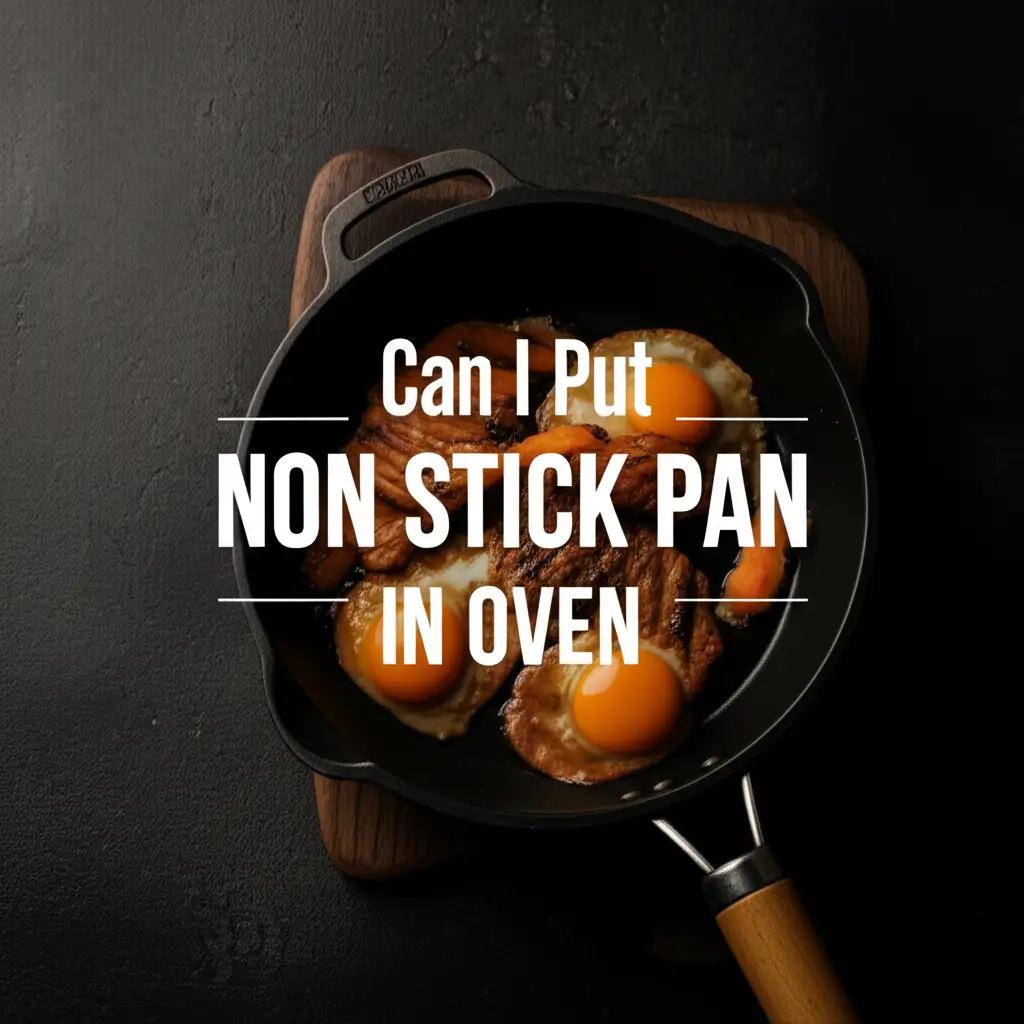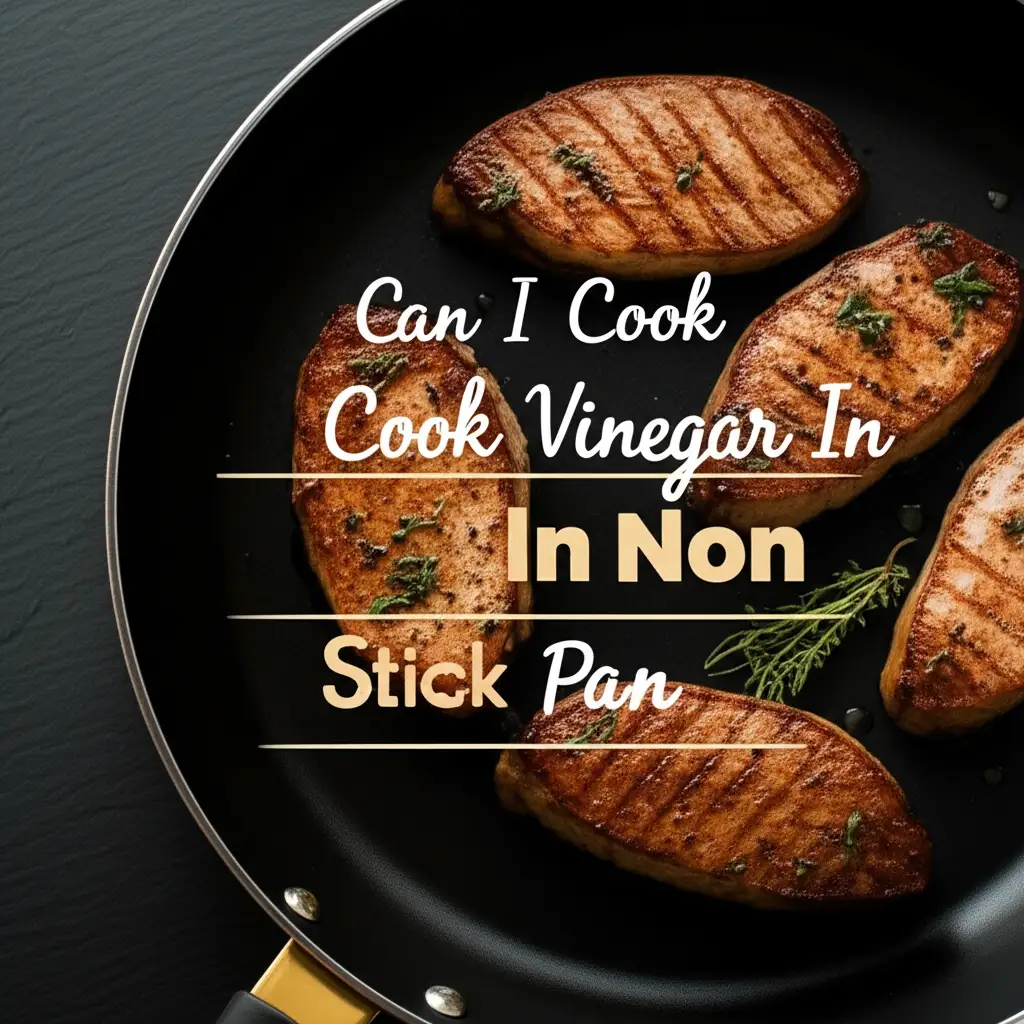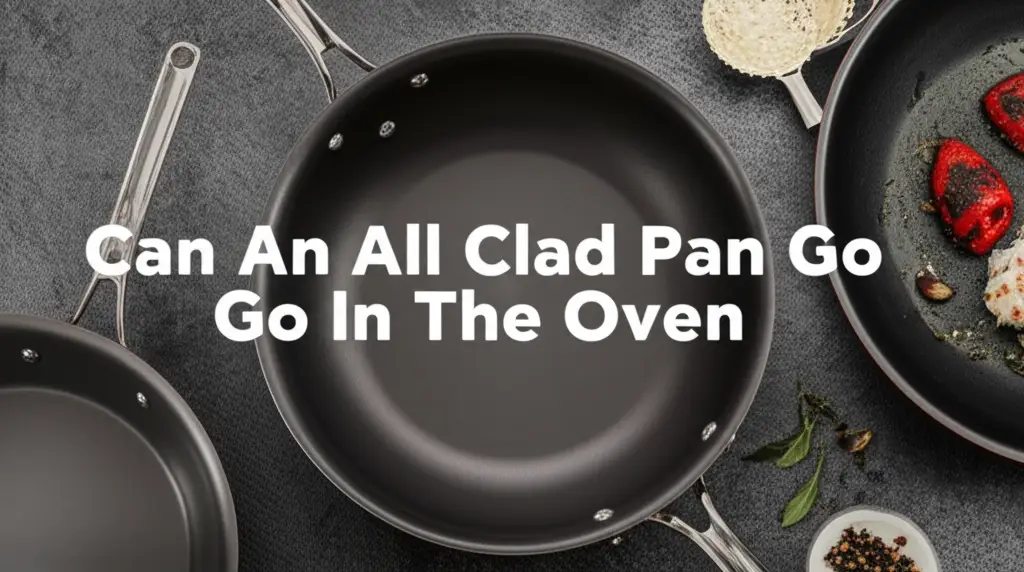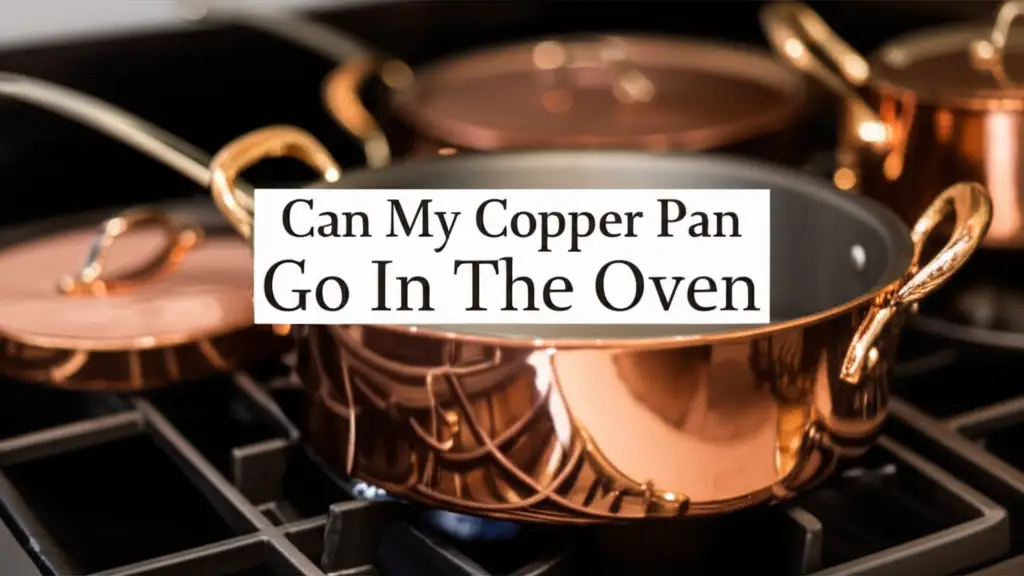· Katria Melrose · Kitchenware · 22 min read
Is Non Stick Pan Good For Deep Frying
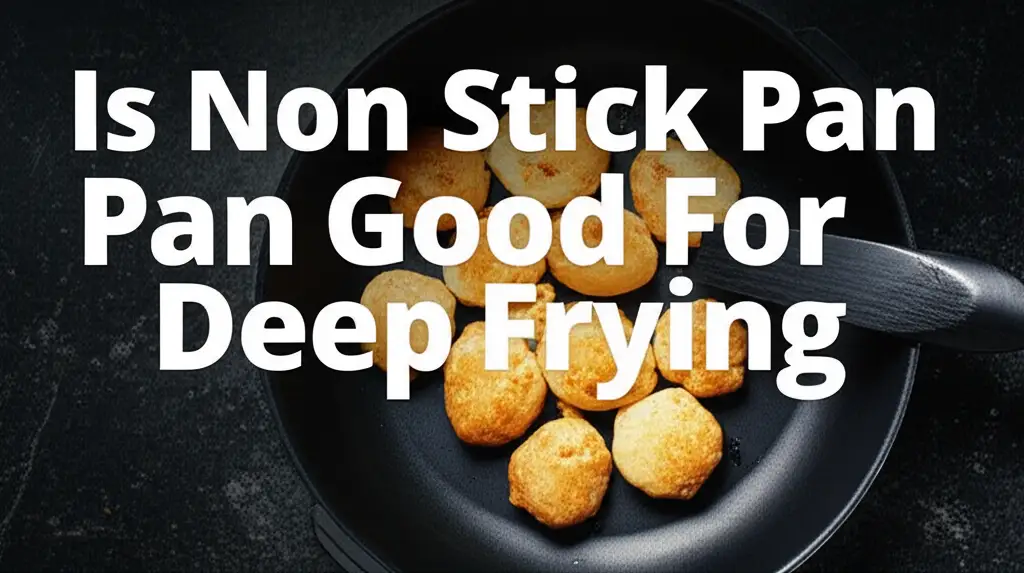
Deep Frying with Non-Stick Pans: Is It a Good Idea?
Ever wondered if your trusty non-stick pan can handle the heat of deep frying? It is a common question. Many home cooks rely on non-stick pans for everyday meals. These pans offer easy food release and simple cleanup. However, deep frying involves specific conditions. It requires high oil temperatures for extended periods. This method of cooking differs significantly from sautéing or searing.
The question, “Is non-stick pan good for deep frying?” needs a careful answer. We need to consider material properties, safety, and cooking results. High heat can affect non-stick coatings. It might release harmful fumes or break down the pan’s surface. Understanding these factors helps you make safe choices. This article explores why non-stick pans might not be the best choice for deep frying. We will also discuss safer alternatives and proper cooking techniques. Your safety and cooking success are important.
Takeaway
- Non-stick pans are generally not recommended for deep frying due to high heat limits.
- Deep frying temperatures often exceed the safe range for non-stick coatings.
- Heating non-stick pans past 500°F (260°C) can release toxic fumes.
- Coating damage from high heat can affect pan longevity and food safety.
- Safer alternatives for deep frying include cast iron, stainless steel, and dedicated deep fryers.
No, a non-stick pan is generally not good for deep frying. Non-stick coatings, like PTFE (Teflon), have specific temperature limitations. Deep frying often requires oil temperatures far exceeding these limits. Using non-stick pans for deep frying can damage the coating, release harmful fumes, and compromise your cooking safety.
Understanding Non-Stick Coatings and Heat Limits
Non-stick coatings are popular in kitchens worldwide. They make cooking and cleaning easier. The most common non-stick material is polytetrafluoroethylene, or PTFE. This substance creates a slick surface. It prevents food from sticking to the pan. However, PTFE has specific temperature boundaries. Understanding these limits is key.
Most non-stick pans are safe for use up to 400°F (200°C) to 500°F (260°C). This temperature range covers most everyday cooking tasks. Sautéing vegetables or frying eggs falls within this safe zone. When you deep fry, oil temperatures typically reach 350°F (175°C) to 375°F (190°C). While this seems within the safe range for some non-stick pans, there is a catch. The pan itself can heat up quickly, potentially exceeding the oil’s temperature, especially on gas stoves or if left empty on heat.
Prolonged exposure to high heat is a concern. Deep frying takes time. The pan holds a large volume of hot oil. This sustained heat can stress the non-stick coating. Even if the oil temperature stays within the “safe” range, the pan’s surface temperature might climb higher. This increases the risk of coating degradation. Some manufacturers state their pans are oven safe up to a certain temperature, which hints at their heat resistance. However, oven heat is dry and evenly distributed, unlike the intense direct heat from a stovetop. Consider checking if you can put your non-stick pan in the oven, as this often indicates its maximum temperature limit for overall heat exposure.
You should always consult your pan’s manufacturer guidelines. Each non-stick pan can have different specifications. Some newer non-stick materials, like ceramic non-stick, might claim higher heat resistance. However, their durability at extreme temperatures for deep frying still needs careful consideration. Even if a pan can withstand a quick burst of high heat, continuous deep frying is a different challenge. This continuous stress can cause the coating to break down over time. It can shorten the lifespan of your pan.
Safety Concerns of Deep Frying in Non-Stick Pans
Safety is paramount when cooking, especially with high-heat methods like deep frying. Using a non-stick pan for deep frying introduces several safety concerns. These issues relate to the pan’s coating and its interaction with high temperatures. Understanding these risks helps you make informed decisions in your kitchen.
The primary concern is the release of toxic fumes. When PTFE coatings exceed their recommended temperature limits, they can degrade. This degradation releases gases. These gases can be harmful if inhaled. Exposure to these fumes can cause flu-like symptoms. This condition is often called “Teflon flu” or polymer fume fever. Symptoms include chills, headache, and fever. While generally temporary, repeated exposure is not advisable. This is a significant reason why you should not use a non-stick pan for deep frying.
Beyond fume exposure, the integrity of the non-stick coating itself is at risk. High temperatures can cause the coating to break down. It might bubble, flake, or peel off. When the coating flakes, tiny particles can mix with your food. Ingesting small amounts of non-stick coating is generally considered harmless by health authorities, as these particles typically pass through the body without being absorbed. However, it is not ideal to consume them. More importantly, a damaged coating loses its non-stick properties. A pan with a damaged coating becomes less effective. Food will start to stick. This means your pan’s lifespan shortens considerably.
Furthermore, a damaged pan surface can make cleaning more difficult. Food residues stick more stubbornly. This can lead to frustration and a less hygienic cooking environment. If your pan coating begins to degrade, you might even consider if you can make your frying pan non-stick again. However, for a pan damaged by excessive heat, especially from deep frying, restoring its non-stick properties is usually not possible or recommended. Prioritizing safety and proper cookware use helps prevent these issues. Always choose the right tool for the job. This ensures both delicious food and a safe cooking experience.
Why Non-Stick Pans Fail at High Temperatures
Non-stick pans are designed for convenience, not for extreme thermal stress. Their failure at high temperatures stems from the very nature of their coating. These coatings, primarily PTFE, are polymers. Polymers are long chains of molecules. They are stable within a certain temperature range. When temperatures climb too high, these chains begin to break apart. This breakdown is why non-stick pans are not suitable for deep frying.
The chemical bonds within the non-stick material weaken under intense heat. This process is called thermal decomposition. As the bonds break, the material transforms. It can become brittle or release volatile compounds. This is why you see bubbling or flaking when a non-stick pan is overheated. The smooth, non-stick surface becomes compromised. It loses its ability to release food easily. Food starts to stick. This defeats the main purpose of owning a non-stick pan.
Moreover, the heat distribution in deep frying adds to the problem. When you deep fry, a large volume of oil gets very hot. The pan’s sides and bottom are directly exposed to this intense heat. Even if your oil thermometer reads 350°F (175°C), the pan’s surface touching the heat source can reach much higher temperatures, especially if the pan is not completely filled with oil or if there are hot spots. This uneven heat or localized overheating accelerates the degradation of the non-stick layer.
The core of the issue is the inherent vulnerability of the non-stick polymer. It simply cannot endure the prolonged, intense heat required for proper deep frying without suffering damage. Other materials like cast iron or stainless steel can handle these temperatures without chemical breakdown. They transfer heat efficiently and maintain their structural integrity. Non-stick pan manufacturers typically warn against using metal utensils. This is because scratches damage the coating. High heat causes similar, or even worse, damage. It changes the coating’s structure from the inside out. This makes the pan unusable for its intended purpose and potentially unsafe.
Optimal Cookware for Deep Frying
Choosing the right pan for deep frying is crucial. It ensures safety, efficiency, and excellent cooking results. Non-stick pans are not ideal due to their heat limitations and potential safety risks. Instead, look for materials designed to withstand high temperatures and distribute heat evenly. You need a pan that can handle sustained high heat without damage.
Cast Iron Pans
Cast iron is a top choice for deep frying. These pans are incredibly durable. They can withstand very high temperatures without degrading. Cast iron also excels at heat retention. Once hot, it maintains a stable temperature. This is vital for deep frying. Consistent oil temperature ensures food cooks evenly. It results in a crispy exterior and properly cooked interior. Cast iron pans are also naturally non-stick when properly seasoned. This natural non-stick quality develops over time. It offers a safer alternative to synthetic coatings at high heat. Seasoning involves baking layers of oil onto the pan. This creates a polymerized surface.
Stainless Steel Pots and Pans
Stainless steel is another excellent option. It is durable, non-reactive, and easy to clean. Stainless steel pots and pans do not retain heat as well as cast iron. However, they heat up quickly and handle high temperatures effectively. Many stainless steel pots come with a heavy, encapsulated base. This base contains a layer of aluminum or copper. It improves heat distribution. This prevents hot spots. Hot spots can burn food and oil. Look for a heavy-gauge stainless steel pot. A Dutch oven, often made of enameled cast iron or heavy stainless steel, is also a fantastic choice. Its deep sides minimize oil splatters.
Dedicated Deep Fryers
For frequent deep frying, a dedicated deep fryer is the best investment. These appliances are designed specifically for the task. They feature built-in thermostats. These thermostats ensure precise temperature control. Many models include baskets for easy food immersion and removal. They also have safety features like automatic shut-offs. Some even come with filtration systems. These systems prolong oil life. Deep fryers make the process simpler and safer. They remove the guesswork from oil temperature management. If you are serious about deep frying, this is the safest and most efficient tool.
Carbon Steel Pans
Carbon steel pans are also a good alternative. They are similar to cast iron in many ways. They are lighter and heat up faster. Carbon steel also requires seasoning to prevent sticking and rust. Like cast iron, they develop a natural non-stick surface over time. They are excellent for searing and high-heat cooking. They can handle deep frying effectively.
When you deep fry, choosing the right pan helps ensure your food turns out perfect. It also keeps your kitchen safe. Stick to pans made from cast iron, stainless steel, or consider a dedicated deep fryer. These options provide the necessary heat resistance and stability. They deliver crispy, golden results every time.
Maintaining Non-Stick Pans for Longevity
While non-stick pans are not ideal for deep frying, proper care can extend their life for everyday cooking. Understanding how to maintain them prevents premature wear. This ensures they remain effective for their intended use. Most non-stick pans are designed for low to medium heat cooking. They are perfect for eggs, pancakes, or delicate fish.
Proper Cleaning After Use
After each use, clean your non-stick pan carefully. Let the pan cool completely before washing it. Sudden temperature changes can warp the pan. It can also damage the non-stick coating. Use warm water, mild dish soap, and a soft sponge or cloth. Avoid abrasive scrubbers or steel wool. These can scratch the delicate coating. If food sticks, soak the pan for a few minutes. This loosens debris. Rinse thoroughly and dry immediately. Leaving water on the pan can cause mineral buildup. If you are wondering how to clean your non-stick pan after use, remember that gentle handling is key.
Avoiding Metal Utensils
Metal utensils are enemies of non-stick coatings. They can scratch and gouge the surface. These scratches compromise the non-stick properties. They also expose the underlying metal. This can lead to rusting or further degradation. Always use wooden, silicone, or plastic utensils. These materials are soft and will not harm the coating. Even a small scratch can begin a process of peeling. This reduces the pan’s effectiveness significantly.
Proper Storage
Storing your non-stick pans correctly protects their coating. Do not stack pans directly on top of each other without protection. This can cause scratches. Place a paper towel, felt pan protector, or a soft cloth between pans. Hang pans if possible, or store them in a way that avoids contact with other cookware. Proper storage prevents accidental damage. It keeps your pans in good condition for longer.
Hand Washing vs. Dishwasher
Many non-stick pans claim to be dishwasher safe. However, hand washing is almost always better. Dishwasher detergents can be harsh. They can degrade the non-stick coating over time. The high heat in a dishwasher can also be problematic. It can shorten the pan’s lifespan. If you want to know if you can put a non-stick pan in the dishwasher, the general advice is to avoid it if possible. Hand washing is gentler. It helps preserve the pan’s finish and non-stick properties.
By following these simple care tips, your non-stick pans will last longer. They will continue to provide easy, stick-free cooking for your everyday needs. Remember, these pans are not built for deep frying. But for their intended purpose, good care ensures great performance.
Deep Frying Techniques and Oil Management
Mastering deep frying involves more than just selecting the right pan. Proper techniques and careful oil management are essential. They ensure food cooks perfectly. They also help maintain safety in your kitchen. High temperatures are involved, so precision is important.
Achieving Optimal Oil Temperature
The correct oil temperature is crucial for successful deep frying. Most deep-fried foods cook best between 350°F (175°C) and 375°F (190°C). Too low a temperature results in greasy food. The food absorbs too much oil. Too high a temperature burns the outside before the inside cooks. Always use a reliable kitchen thermometer to monitor oil temperature. An instant-read thermometer is ideal. Heat the oil slowly and consistently. This helps you reach the target temperature without overheating. Add food in small batches to maintain oil temperature. Adding too much at once will drop the temperature. This leads to soggy results.
Choosing the Right Oil
Selecting the right oil is as important as choosing the right pan. Different oils have different smoke points. The smoke point is the temperature at which an oil begins to burn and smoke. This also means it starts to break down and can produce off-flavors. For deep frying, choose oils with high smoke points. Good options include:
- Peanut oil (smoke point around 450°F / 232°C)
- Canola oil (smoke point around 400°F / 204°C)
- Vegetable oil (blends, often around 400°F / 204°C)
- Sunflower oil (smoke point around 450°F / 232°C) Avoid extra virgin olive oil or butter for deep frying. Their low smoke points make them unsuitable.
Proper Ventilation and Safety
Deep frying produces smoke and odors. Ensure your kitchen is well-ventilated. Turn on your range hood fan. Open a window if possible. This helps clear the air. Also, always keep a fire extinguisher nearby. A grease fire can happen. Never use water to put out a grease fire. Water can spread the flames. Instead, turn off the heat. Cover the pan with a metal lid or baking sheet. Baking soda or a class K fire extinguisher can also work. Always use long tongs or a spider strainer to handle food. This keeps your hands away from hot oil. Do not overfill the pan with oil. Leave enough space to prevent boilovers when food is added. This is especially true for moist foods.
Oil Filtration and Reuse
After frying, let the oil cool completely. Then, strain it through a fine-mesh sieve lined with cheesecloth. This removes food particles. Filtering helps prolong the oil’s life. Store filtered oil in a sealed container in a cool, dark place. You can typically reuse deep-frying oil a few times. However, if it smells rancid, looks cloudy, or foams excessively when heated, discard it. Proper oil management saves money and ensures better food quality.
By focusing on these techniques, you can achieve excellent deep-fried results. You can also ensure a safer cooking environment. The right oil, temperature control, and safety precautions are key. They make deep frying an enjoyable part of your cooking repertoire.
Common Myths About Non-Stick Cookware
Non-stick cookware is a kitchen staple. However, many myths surround its use and safety. It is important to separate fact from fiction. This ensures you use your non-stick pans correctly and safely. Understanding these common misconceptions can help you avoid potential issues.
Myth 1: Non-Stick Pans Are Totally Safe at Any Temperature
Reality: This is a dangerous myth. Non-stick pans are safe up to their recommended temperature limits. These limits are typically between 400°F (200°C) and 500°F (260°C). Heating them above these temperatures can cause the coating to break down. This process releases polymer fumes. Inhaling these fumes can lead to flu-like symptoms. This condition is known as polymer fume fever. Always check the manufacturer’s maximum temperature recommendation for your specific pan.
Myth 2: Scratched Non-Stick Pans Are Extremely Dangerous
Reality: While it is not ideal, ingesting small flakes of non-stick coating from scratched pans is generally not considered harmful. The material passes through the body. It does not get absorbed. However, a scratched pan loses its non-stick properties. It can also degrade faster when scratched. This makes it less effective and more prone to sticking. While not an immediate health crisis, a heavily scratched pan should be replaced for optimal cooking performance and peace of mind. This also relates to questions like why you should not use a non-stick pan for certain cooking methods or if your non-stick pan gets damaged.
Myth 3: Non-Stick Pans Last Forever
Reality: Non-stick pans do not last forever. Their lifespan depends on usage and care. Even with proper maintenance, the coating wears down over time. High heat exposure, abrasive cleaning, and metal utensils accelerate this wear. The non-stick properties diminish. Food starts to stick. A typical non-stick pan might last 3-5 years with regular use. If you notice persistent sticking or flaking, it is time to replace your pan. Understanding how long you can use a non-stick pan helps set realistic expectations for its durability.
Myth 4: All Non-Stick Pans Are the Same
Reality: Non-stick technology has evolved. While PTFE (Teflon) is common, other types exist. Ceramic non-stick coatings, for example, are often advertised as being PFOA and PFAS-free. They also sometimes claim higher heat resistance. However, ceramic non-stick coatings can be less durable than traditional PTFE over time. Different brands use proprietary formulations. Always research the specific type of non-stick pan you are buying. Consider its heat limits and care instructions. Some pans are designed for specific cooking tasks. Not all non-stick pans perform equally in every situation.
Myth 5: You Can “Re-Season” a Damaged Non-Stick Pan
Reality: Unlike cast iron, you cannot re-season a damaged non-stick pan to restore its non-stick properties. The non-stick coating is a factory-applied layer. Once it is scratched, flaked, or degraded by heat, it cannot be repaired or renewed. Any attempts to “season” it like cast iron will be ineffective. If your non-stick pan has lost its non-stick qualities or shows signs of damage, it needs to be replaced. This is a key difference between non-stick and cast iron cookware.
By understanding these myths, you can use your non-stick cookware more effectively. You can also ensure its safe and proper use in your kitchen. Always prioritize safety and pan longevity through informed usage.
Alternatives to Non-Stick Pans for Everyday Cooking
While deep frying is not suitable for non-stick pans, it is also helpful to know alternatives for everyday cooking tasks. These alternatives can handle a wider range of temperatures and cooking methods. They offer different benefits. Choosing the right pan depends on your cooking style and needs.
Stainless Steel for Versatility
Stainless steel pans are highly versatile. They are durable, non-reactive, and can handle high heat. This makes them excellent for searing, browning, and deglazing. They are also suitable for sautéing vegetables or cooking sauces. While not naturally non-stick, with proper technique (e.g., preheating the pan, adding oil to a hot pan), food sticks much less. They are also easy to clean. Many come with an aluminum or copper core. This core provides better heat distribution. This prevents hot spots. Stainless steel pans are a workhorse in any kitchen. They are suitable for almost any cooking task except those requiring extreme non-stick properties.
Cast Iron for Heat Retention
Cast iron pans are legendary for their heat retention. Once hot, they stay hot. This makes them perfect for achieving a perfect sear on meats. They also excel at baking and frying. A well-seasoned cast iron pan develops a natural non-stick surface. This surface improves with age and use. Cast iron is incredibly durable. It can last for generations. It also adds a small amount of dietary iron to your food. This can be beneficial. However, cast iron requires specific care, including seasoning and avoiding harsh soaps. It also heats up slower than other materials.
Carbon Steel for Professional Performance
Carbon steel pans combine some benefits of cast iron and stainless steel. They are lighter than cast iron. They heat up faster and respond more quickly to temperature changes. Like cast iron, they require seasoning. They develop a natural non-stick patina over time. Many professional chefs prefer carbon steel. It offers excellent heat control. It is ideal for sautéing, stir-frying, and searing. Carbon steel is also highly durable. It can withstand very high temperatures. It is a great choice for those seeking a balance between cast iron’s heat retention and stainless steel’s responsiveness.
Ceramic Non-Stick (PFOA/PFAS-Free)
For those who still desire a non-stick surface without traditional PTFE, ceramic non-stick pans are an option. These pans use a silica-based gel coating. This coating offers non-stick properties. They are often marketed as being “green” or “healthy” because they are typically free of PFOA and PFAS chemicals. Ceramic non-stick can handle slightly higher temperatures than traditional non-stick. However, their non-stick properties tend to degrade faster. They are also prone to chipping if dropped or subjected to harsh cleaning. They are generally suitable for everyday low-to-medium heat cooking, similar to traditional non-stick. They are not recommended for deep frying or very high-heat applications.
Each pan material has strengths and weaknesses. Understanding these helps you build a versatile cookware collection. You can choose the best tool for each specific cooking method. This ensures better results and extends the life of your cookware.
When to Replace Your Non-Stick Pan
Knowing when to replace your non-stick pan is vital. It impacts both cooking performance and safety. Non-stick coatings do not last forever. They wear down over time. Recognizing the signs of a failing pan helps you know when to buy a new one. This ensures you always have effective cookware.
Signs of Coating Degradation
The most obvious sign is when food starts to stick. The pan is no longer non-stick. This means the coating has worn away or broken down. You might also notice scratches, flaking, or peeling. Even small scratches can lead to more widespread damage over time. Bubbling or blistering of the coating is another clear indicator. This often happens from overheating. These issues mean the pan is past its prime. It will no longer perform as intended.
Discoloration or Warping
Over time, non-stick pans can show discoloration. This often appears as a dark, uneven patch. This discoloration can indicate overheating. It can also show general wear. Warping is another sign. If the pan’s bottom is no longer flat, it will not sit properly on your stove. This leads to uneven heating. This can burn food in some spots and undercook it in others. Warping can happen from sudden temperature changes. For example, rinsing a hot pan with cold water. It also happens from prolonged high heat.
Changes in Cooking Performance
Beyond visible damage, pay attention to how your food cooks. If eggs start sticking more, or pancakes do not slide easily, your non-stick coating is failing. You might find yourself needing more oil or butter to prevent sticking. This defeats the purpose of a non-stick pan. If cooking becomes frustrating because of sticking, it is a strong hint. The pan is no longer performing as it should.
Odors or Fumes
If your non-stick pan emits unusual odors or fumes when heated, replace it immediately. This is a serious safety concern. It indicates that the non-stick coating is overheating and degrading. It is releasing potentially harmful gases. Never continue to use a pan that smells or smokes excessively when heated, especially if it’s not from burning food. This is a direct sign that the pan has been compromised. If you find yourself asking why your non-stick pan sticks or why your new non-stick pan sticks, it might be due to manufacturing defects or initial mishandling, and in some cases, replacement is the best option.
Replacing a worn-out non-stick pan is a smart decision. It ensures better cooking results. More importantly, it maintains safety in your kitchen. Do not wait until your pan is unusable. Look for these signs. Then, invest in a new, high-quality pan. This helps you continue cooking with ease and confidence.
Conclusion
We have explored the question: “Is non-stick pan good for deep frying?” The clear answer is no. Non-stick pans are designed for convenience at lower to medium temperatures. They are not suitable for the intense, sustained heat required for deep frying. Using them for this purpose can lead to several problems. It can damage the pan’s coating. It can also release potentially harmful fumes. This compromises both your pan’s lifespan and your safety.
For successful and safe deep frying, always choose appropriate cookware. Cast iron, stainless steel, and carbon steel pans are excellent choices. They can handle high temperatures without issue. Dedicated deep fryers offer the best temperature control and safety features. By using the right tools, you ensure your food cooks perfectly crispy. You also keep your kitchen a safe environment.
Remember to care for your non-stick pans properly for everyday use. Avoid high heat and metal utensils. Clean them gently. This extends their life for the tasks they are designed for. When a non-stick pan shows signs of wear, replace it. Prioritize safety and effective cooking in your home. Choose wisely for every culinary adventure.


